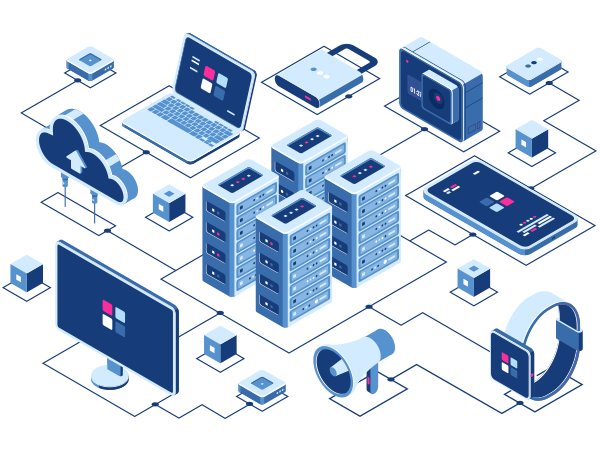Do you know about IT infrastructure outsourcing? Outsourcing the infrastructure to a managed service provider (MSP) has several advantages. Variable resource unit costs, faster cycle times for provisioning project resources, and decreased support expenses are among the most valued benefits for organizations that make the switch.
IT infrastructure outsourcing has drawbacks, including the possibility that a MSP will provide you with exactly what you want than what you need, at a higher cost than anticipated.
To avoid unnecessarily costly mistakes, here are five risks organizations face when outsourcing infrastructure to MSPs and how you can take positive steps to mitigate them. By being aware of these risks and taking the appropriate precautions, you will be able to obtain the benefits of outsourcing while preserving--or even improving--the business case for your decision.
Not comprehending your firm's base footprint before you market
Organizations frequently enter outsourcing projects with a thorough and accurate knowledge of their base footprint, only to discover surprises when someone comes in later to audit or inventory what is physically there.
You must complete these inventories yourself to sell with the proper quantities, which will help you receive the greatest support pricing and unit metrics. You may end up hiring a vendor, thinking you know what you're doing when, in fact, you don't. You might assume that the base footprint is small because of the low price and not realize that the costs will be higher than expected until it's too late.
When you need to order more of a product than you originally quoted, you lose the ability to haggle over pricing for that product. If you select your vendor and then immediately apply an ARC/RRC cost adjustment, you could jeopardize your business case by having to ask questions like, "Will my updated baseline numbers and associated cost changes still support a strong business case?"
It's always preferable to set up your foundation footprint before you begin. As you continue to develop your process and ultimately choose a vendor, you'll be able to validate the business case and carry that forward without substantial change.
Not investing enough time to predict your demand
It's critical to forecasting your demand from various perspectives properly, but especially to predict your costs with your basic footprint and apply the changes in that cost structure over time based on your anticipated demand.
MSPs can use that baseline to see the base revenue and estimated extra revenue from a forecasted demand. With this information, providers will know how much they can charge without scaring away potential customers.
Understanding and providing your provider with insight will assist you in determining the correct pricing points up front, which will then become the anchor for defining an appropriate AR/RC model for deviations from your baselines over time. You won't be able to withstand your business case if you don't properly predict demand.
Ignoring the past performance metrics
If you want to avoid a common mistake when shopping for infrastructure support, make sure you bring along performance metrics from the current as well past six months. This way, you'll be going into the market with all the information you need.
Having data demonstrating your system's performance, how quickly incidents are dealt with, and service request fulfillment over the last six months will make it easier to agree with providers about where things currently stand and what can be expected.
Furthermore, it allows for a quicker transition to the baseline, WHERE service level agreements DON'T have any penalties related to support or guaranteed service.
Forgetting to keep your documentation up to date with current services
Before going to market, you should make sure your documentation for all services currently provided is up to date. Inventorying the full range of services presently offered, analyzing them, and getting them approved can go a long way toward correctly estimating the cost of your service.
Now is the time to consider what other tasks or services you want to be added to your current outsourcing agreement. You do not need to write every possible day-to-day detail; simply identify the broader goals you have for your provider. To document the scope of your outsourced services, use phrases such as "a sample of the activities entailed in this responsibility include." Or it can be "including but not limited to the following."
The first step in managing your project is to write down the scope of services on paper. Because whatever you miss will be an opportunity for your provider to introduce a change order later, it's critical to get this down upfront.
MSPs should be in charge of the story during the evaluation process.
By managing and controlling the narrative around the scope of services and how you'll cost/associate changes in that service to pre-defined metrics, you can reduce many risks associated with scope creep or inconsistent proposal responses. State management, capture, quantification, and normalization of infrastructure are important to maintaining regarding the number of servers you have, how they are classified, the series and tier of router switches (small, medium, or large), as well as wireless access points.
Knowing what those indicators are and establishing the alignment with your demand forecast allows you to go to market in a way that addresses specific price points against your metrics and quantifies your environment.
Providing all possible vendors with a comprehensive and precise request for proposal criteria, baseline metrics, and anticipated demand may enable you to receive normalized bids back that you can compare side-by-side. This will help you make more informed decisions about the best fit for you, not just in terms of service but also in terms of price.
When it comes to IT infrastructure outsourcing services, getting started with this approach before going to market is critical to avoid costly blunders after you've been awarded and contracted for services. There's truth in the adage that preparation is the best form of prevention. Preparation will assist you in reducing some of the dangers associated with outsourced infrastructure managed service contracts.





